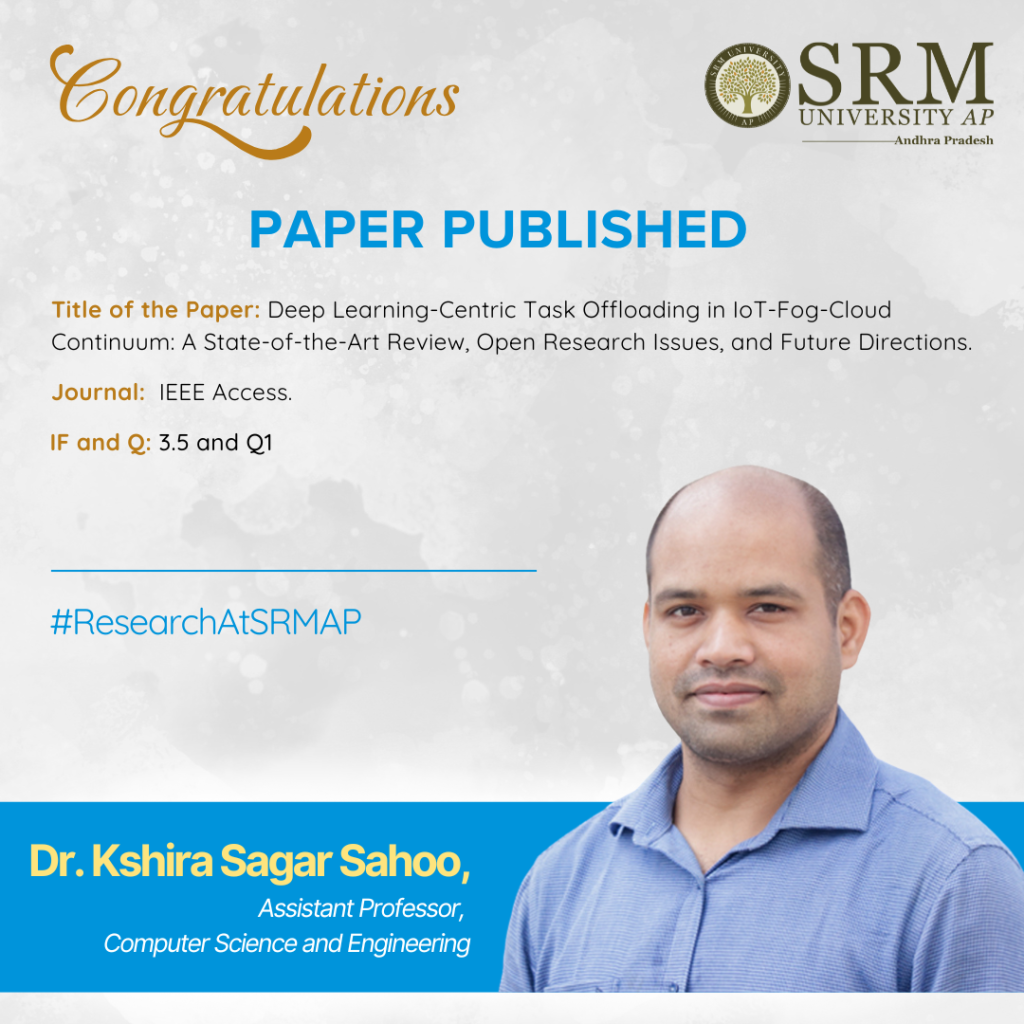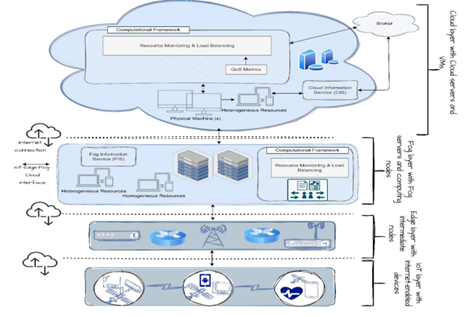
In the paper titled “Deep Learning-centric Task Offloading in IoT-Fog-Cloud Continuum: A State-of-the-Art Review, Open Research Issues and Future Directions,” by Dr Kshira Sagar Sahoo, Assistant Professor, Department of Computer Science and Engineering, and collaborators, the role of machine learning and deep learning in optimising IoT systems is comprehensively reviewed. Published in IEEE Access (2025), the study examines how intelligent task offloading and resource allocation across the fog–cloud continuum can address challenges of latency, bandwidth, and privacy. The article highlights key open issues and future directions, offering insights for developing faster, more reliable, and secure IoT applications in domains such as healthcare, smart cities, autonomous vehicles, and industrial IoT.
Abstract
The rapid growth of IoT and real-time applications has created massive volumes of data, which are traditionally processed in cloud-centric systems. This approach often suffers from high latency, bandwidth limitations, and privacy risks. Fog computing, by bringing computation closer to IoT devices, offers a promising solution. Our study provides a comprehensive review of task offloading and resource allocation in fog–cloud continuum, with a focus on machine learning and deep learning–based approaches.
Explanation in Layperson’s Terms
With billions of smart devices (like wearables, sensors, and cameras) generating data every second, sending everything to the cloud for processing can cause delays and strain the internet. Imagine if your smartwatch had to send your heartbeat data across the globe before alerting you of a health issue—that delay could be dangerous. Our research looks at how to use fog–cloud continuum, where nearby devices like routers or gateways help with computation instead of sending everything to the cloud.
Practical Implementation
Findings from this survey can help design smarter IoT systems where tasks are offloaded efficiently to nearby fog or edge devices, reducing latency and improving reliability. Key applications include:
- Healthcare monitoring (real-time alerts)
- Smart cities (traffic management, surveillance)
- Autonomous vehicles (low-latency decision-making)
- Industrial IoT (automation, predictive maintenance)
Social Impact
- Faster decision-making: Improves user safety and experience by cutting delays.
- Cost efficiency: Reduces operational costs by lowering dependence on cloud-only processing.
- Data privacy: Sensitive data can be processed closer to the source, enhancing security.
Collaborations
This research is a joint collaboration between:
- University of Saskatchewan, Saskatoon, SK, Canada
- GITAM Deemed to be University, Visakhapatnam, India
- SRM University-AP
Future Research Plans
- Developing lightweight, explainable AI models for task offloading on constrained IoT devices.
- Extending research into cybersecurity in IoT–Fog–Cloud systems, particularly DDoS detection and mitigation.


